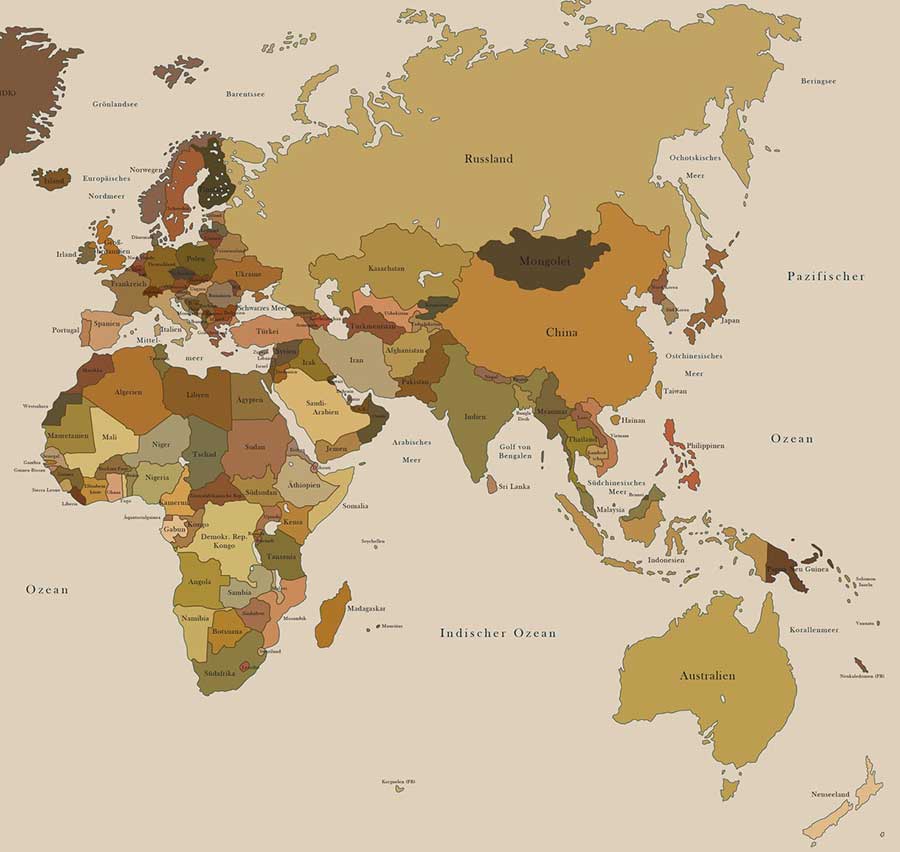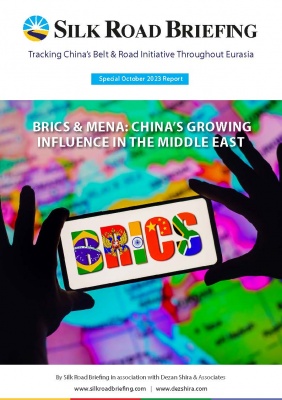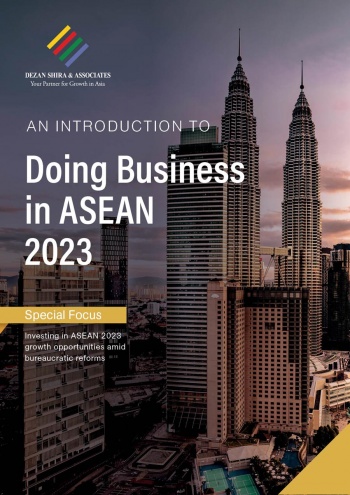Egypt and India Bilateral Trade: 2023 Status and Future Prospects
Commitments to develop mutual trade to US$25 billion can lead to opportunities
By Farzad Ramezani Bonesh
Background
India and Egypt are among the oldest civilizations in the world and have had commercial and economic contacts for thousands of years. In the modern era, after India’s independence in 1947, diplomatic relations were established in August 1947.
Common goals regarding independence, the friendship treaty between the two countries in 1955, and the establishment of the non-alignment movement strengthened motivations to further strengthen their relations.
Despite the subsequent ups and downs in relations such as during the Cold War, relations have seen different and wider dimensions in the past decade, such as the increase in the visits of senior officials from each other’s countries. In 2022, India and Egypt celebrated the 75th anniversary of diplomatic relations between the two countries.
Expansion of Geopolitical and Defense Cooperation
Undoubtedly, the expansion of geopolitical, political, security, and defense interactions and high-level meetings by the officials and leaders of both countries are very important in the development of bilateral trade.
In New Delhi’s foreign policy, India’s desire to play a stronger global role, compete with China, and have a greater presence in Africa (in the form of the India-Africa forum) has caused more attention to be paid to relations with Cairo. Along with the geopolitical and geostrategic changes, the intensification of competition in the Asia-Pacific and MENA the strategic importance of the Suez Canal, the first important visit of the Prime Minister of India to Egypt in the last 26 years also took place.
Since 2014, there have been official and ministerial visits from India to Egypt and vice versa by various security, parliamentary and ministerial delegations. Abdel Fattah el-Sisi visited India several times. In his visit to India in September 2016, a joint statement was issued with three pillars of political-security cooperation, economic cooperation, scientific cooperation, and cultural relations.
Sisi’s presence in January 2023, as a guest on Republic Day and later at the G20 meetings in New Delhi, the joint statement on the promotion of relations, the trip of Narendra Modi, the Prime Minister of India, (the first official visit) in June 2023 to Egypt, receiving the Nile Medal, and signing the strategic partnership agreement, are important parts of the political relations between the two countries in the past year.
The two countries also have pursued defense and security cooperation through several high-level meetings between defense delegations, ministerial meetings, the signing of a memorandum of understanding on defense cooperation on November 19, 2022, and further activities such as the establishment of the Joint Defense Committee (JDC), and holding joint exercises. In fact, military ship transit facilities for India, closer links between defense institutions, technology transfer, and cooperation in counter-terrorism have expanded. Egypt is seen as an important target market for the Indian defense industry.
Food Security
The conflict between Russia and Ukraine has left Egypt with a shortage of wheat. In April 2022, Egypt considered India a valid supplier, and a shipment was also cleared. The previous cooperation between India and Egypt in the World Millet Conference, scientific cooperation, agricultural research, joint working groups in the field of agriculture and animal, dairy, and fisheries, and another recent memorandum in the field of agriculture will lead to strengthen grain trade, reduce supply chain costs, deal with global food crisis and supply of basic needs of strategic goods.
Egypt imports 60% of its basic food needs and India is one of the largest producers of food grains. Although India as the world’s second largest wheat producer, banned wheat exports in May 2022, India and Egypt had previously discussed wheat and rice trade in national currencies and were working on a ‘wheat for fertilizer agreement’.
India needs chemical fertilizers and is the fifth exporter of fertilizers in the world. This ensures the food security of both countries. Also, Cairo hopes that India’s support for Egypt’s hosting of the World Center for grain supply and storage, and the creation of a fund to deal with losses and damages due to the weather change, will lead to good results.
Energy
India’s energy needs are still growing. Energy plays an important role in trade relations, and Egypt’s resources can play an important role in the energy security of Asia’s second-largest economy.
Over the past decade, Indian companies such as Sterling & Wilson, India Limited, and ONGC Videsh have played important roles in Egypt’s energy sector, oil exploration blocks, oil and gas exploration in the Mediterranean and onshore, shareholding in the CNG sector, pipeline, and so on.
Indian companies such as Sterling and Wilson (S&W) have built projects in Egypt in the areas of ‘air transmission of electricity transmission company’, and solar PV plants. India ranks among the top countries specializing in solar PV and the two countries have increased cooperation in the field of renewable energy. In December 2022, Egypt signed memorandums of understanding for the production of green hydrogen and its derivatives with international and local companies, including Ocior Energy.
The initial agreement with the Indian company to invest US$4 billion in the Suez Canal Economic Zone (SCZone) is while Egypt plans to use alternative energies and greatly develop the investment in Egypt’s hydrogen infrastructure by 2030.
They are also discussing the construction of a US$12 billion green hydrogen plant in the Suez Canal Economic Zone by India’s ACME company, setting up an international forum to finance green hydrogen projects, and turning Egypt into a regional energy hub in the Eastern Mediterranean.
Expansion of Investments
The Egypt-India Bilateral Trade Agreement has been in force since March 1978. There are several bilateral mechanisms such as Joint Working Groups, Joint Trade Committee (JTC) Joint Business Council (JBC), Ministry of Foreign Affairs Advisory, and other bilateral mechanisms to facilitate trade and economic relations between Egypt and India.
Numerous bilateral mechanisms have been institutionalized in the fields of cyber, space, biotechnology and nanotechnology, medicine and pharmaceuticals, health and medicine, science and technology, and so on.
The signing of an agreement to upgrade bilateral relations to a “strategic partnership” will further deepen cooperation in investment. Indians have implemented projects in Egypt such as a data center for Telecom Egypt. In early December 2022, Indian company Tech Mahindra also established its first global delivery center in Egypt. With more than 450 Indian companies, about 50 of which are active in different sectors of Egypt, India’s foreign direct investment (FDI) in Egypt is about US$4 billion.
In H1 2023, Indian companies have invested about US$170 million in Egypt. Major Indian investments in Egypt include TCI Sanmar (worth US$$1.5 billion), while other Indian companies such as FLEX P. FILMS, SCIB Paints, and Godrej are active in a wide range of sectors such as manufacturing and construction with mixed investment, clothing, agriculture, chemicals, automotive, retail, plastic, paper, packaging, and related items.
While Egypt has taken several steps to attract more foreign direct investment (FDI) in the real estate development sector (more than 20% of GDP). Government estimates show that India’s investment in Egypt is distributed in 52 projects, including tourism.
Hundreds of Indian companies have participated in various trade exhibitions in Egypt and the value of Indian investment in Egypt in the first half of the fiscal year 2022/2023 reached US$33.1 million, an increase of 36%. New Indian investments are expected to be injected into the Egyptian economy and grow.
India is witnessing a sharp growth in FDI inflows. India’s important and effective variables such as proper growth, the large population of the world, the fifth largest economy in the world, (now approaching US$5 trillion in PPP terms) while technological advances have also attracted the attention of Egypt.
However, Egypt’s investment in India is not extensive at about US$37 million, which includes smart electric meters, car paint, waterproof membranes, and information technology.
Technology and Tourism
The 5th meeting of the India-Egypt Joint Trade Committee (JTC) in July 2022 reviewed the scope for strengthening bilateral trade such as IT services, and tourism. This year, the two countries’ leaders also signed agreements to expand cooperation in the field of cyber security, and information technology.
Projects such as the Information Technology Center at Al-Azhar University, and CEIT are active through donations. Considering India’s expertise in information technology, Cairo welcomes India’s technological power in the fields of pharmaceuticals, logistics, engineering, and transportation.
Indian startups and Indian higher education institutions can set up branches in Egypt, Indian scholarships are also important.
Cairo also is eager to attract more tourists from India to bring more foreign currency into the tourism-dependent economy. Currently, about 4,000 Indian nationals are based in Egypt. The remittances of Egyptians working in India in the fiscal year 2021/2022 and the value of remittances of Indians working in Egypt have increased.
Expanding Bilateral Trade
Bilateral trade reached US$7.26 billion in 2021-22, registering a 75% increase compared to the 2020-21 financial year, according to the Indian Embassy. In the fiscal year 2022-2023, bilateral trade has reached US$6.06 billion, of which US$4.11 billion were exports from India and US$1.95 billion were exports from Egypt. India’s exports have increased by 10%, but imports have fallen by nearly 45%.
Egypt’s key exports to India in 2022 include mineral fuels, mineral oils and their distilled products worth US$1.1 billion, chemical fertilizers worth US$242.1 million, and non-chemical products, salt, sulfur, and cotton.
In contrast, Egypt’s key imports from India in 2022 include meat worth US$669.2 million, iron and steel worth US$538.8 million, mineral fuels, mineral oils and distilled products, organic chemical products and boilers, machinery, and mechanical equipment.
India was Egypt’s sixth largest trading partner, but Egypt was India’s 38th largest trading partner in 2022-23.

Challenges and Prospects
India’s investments in Egypt are still not high compared to other actors. Also, challenges such as unfavorable geopolitical developments, economic uncertainties, Egypt’s debt situation, the possibility of recession, and the adjustment of global demand may affect the prospects of cooperation between the two countries.
Some multilateral projects such as the proposed India-Middle East corridor which also includes Saudi Arabia, the United Arab Emirates, Jordan, Israel, and the European Union may have a negative impact on India’s trade interests in Egypt.
However, bilateral trade has increased more than five times in the past ten years, and the two sides have agreed to quickly address all trade barriers.
Recently, the two side’s leaders announced that they will double bilateral trade from the current level to US$12 billion over the next five years. In addition, the two countries are starting to trade goods in local currency. Using Indian rupees and Egyptian Pounds as opposed to the US dollar can help strengthen business relations.
Multilateral cooperation within BRICS in forming alternative payment systems, moving away from reliance on the US dollar, increasing trade with their domestic currencies, can benefit both parties and diversify the currency portfolio.
Meanwhile, New Delhi’s help can play a positive role in granting the new development bank facilities in local currency and the bank’s financial and technical assistance to Egypt.
Bilateral cooperation can speed up access to the negotiation plan for a Free Trade Agreement (FTA), the implementation of the African Development Agenda 2063, as well as the objectives of the African Continental Free Trade Agreement (AfCFTA). Egypt’s joining of the BRICS New Development Bank is also likely to see an increase of investment into the country, with some of that being Indian capital.
India’s potential can increase the volume of production, stimulate Egypt’s exports, increase the value of the pound, reduce the dollar crisis in the economy, save dollars, foreign direct investment (FDI), reduce public debt over the next five years (probably US$500 billion) and access to contribute more to the bright vision of 2030 and a better future for Egypt.
In fact, due to the large plans to build New Cairo, nuclear power plants, and an Egyptian high-speed train system, complementary economic capacities, the bilateral “mutual commitment” to “increase visits, facilitate direct flights, and develop New Delhi’s investment in Egypt” and dedicated land for India in the Suez Canal Economic Zone, we may see an unprecedented increase in trade.
About Us
Dezan Shira & Associates assist foreign investors into Asia and have three offices in India. For assistance, please email india@dezshira.com and view our Doing Business in India guide below. We also have a partner firm in Cairo.
Related Reading
- Egypt’s Pending Membership Of BRICS – An Overview
 BRICS & MENA
BRICS & MENA  An Introduction to Doing Business in India 2023
An Introduction to Doing Business in India 2023
About Us
Middle East Briefing is one of five regional publications under the Asia Briefing brand. It is supported by Dezan Shira & Associates, a pan-Asia, multi-disciplinary professional services firm that assists foreign investors throughout Asia, including through offices in Dubai (UAE), China, India, Vietnam, Singapore, Indonesia, Italy, Germany, and USA. We also have partner firms in Malaysia, Bangladesh, the Philippines, Thailand, and Australia.
For support with establishing a business in the Middle East, or for assistance in analyzing and entering markets elsewhere in Asia, please contact us at dubai@dezshira.com or visit us at www.dezshira.com. To subscribe for content products from the Middle East Briefing, please click here.





